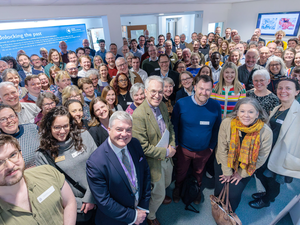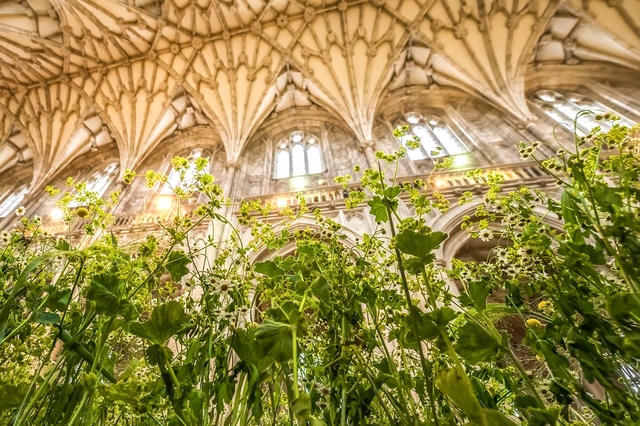-

31 March 2025
Environment colleagues gather in Cambridge
As Church of England environment and net zero carbon officers gathered at the British Antarctic ... read more
-

22 January 2025
Bronze Eco Diocese award for Portsmouth Diocese
Portsmouth Diocese has been awarded a Bronze Eco Diocese award by A Rocha, the organisation ... read more
-

21 January 2025
First net zero carbon conference for diocese
The Diocese of Portsmouth hosted its first Net Zero Carbon conference at Portsmouth Cathedral last ... read more
Helping your church reach net zero carbon

IT can be done! We have the great honour of caring for some truly beautiful buildings and churchyards, which have been the hearts of their communities for generations, centuries or even a millennium.
When the Augustinian canons built St Mary’s Portchester out of Isle of Wight stone, they were not weighing up the environmental benefits of the materials they were using – they were more interested in standing up to Channel storms. When Alfred Waterhouse was designing the beautiful stained glass at St Matthew’s Blackmoor, the thermal efficiency of the glass never crossed his mind. And even in the 1970s, when St Mark’s North End was built, no one had heard of heat pumps or renewables.
And yet, as the 21st century custodians of these wonderful buildings, we are asked to help lead our church towards net zero carbon. General Synod has committed to reaching this target by 2030 across all of the Church of England, and that includes the churches for which we care. It seems such a daunting target: the timeframe is short, and decreasing by the day, but we all have the same goal, so we can make really good progress if we work together and share our knowledge and experience.
A great place to start is with the Energy Footprint tool on the Church of England website, which can help you identify where to focus your efforts. It has a map so you can search for neighbouring churches who may have already installed new technology and it also includes case studies of churches who have already achieved net zero. For example, St Michael’s Baddesley Clinton in the Midlands recently achieved net zero carbon by installing under-pew heating.
When you have been inspired, and done your research, two potential fears loom large: How will we pay for it? And will we get a faculty?
You may have read that there have been many changes to the faculty system over the past year, which were introduced especially to make environmentally beneficial changes easier for parishes. For example, did you know that installing electric car charging points can often be a List B permission rather than a full faculty now? The Diocesan Advisory Committee is very keen to help churches make progress towards net zero carbon.
Help with the costs of this work can often be found through charitable grants. Investigate your local council grants and try the Parish Resources website which has a huge list of charities who give grants for environmental purposes.
Beyond net zero, there are many ways that churches can help encourage biodiversity in their churchyards. The Caring for God’s Acre website is a good source of inspiration. Why not encourage your congregation to engage by organising an event for Churches Count on Nature week, which takes place in June each year? A dawn chorus breakfast, a teddy bear’s bug hunt or a reflective walk perhaps? Your churchyard may have more modest charms than Warnford’s spectacular snowdrops, but a patch of green space in an urban are can be just as valuable for your community.